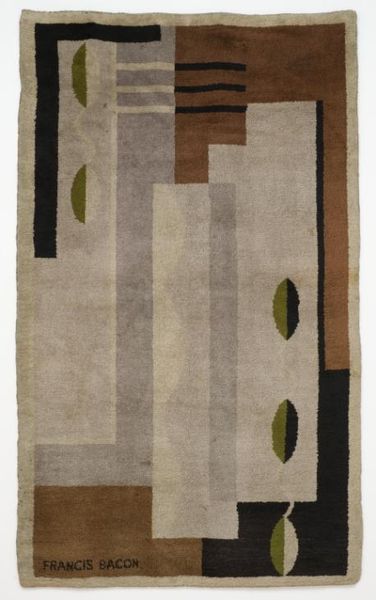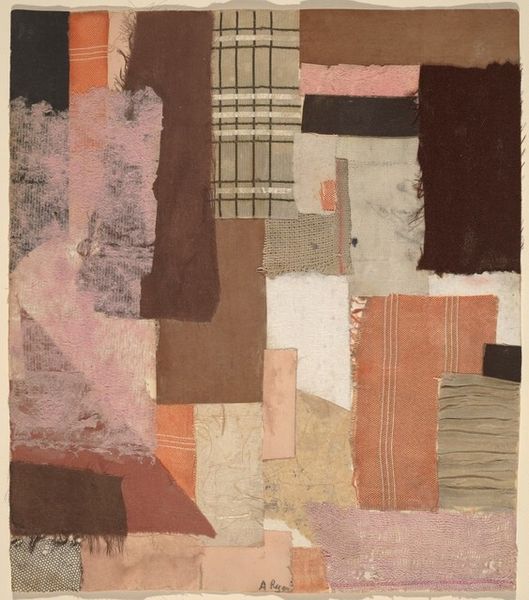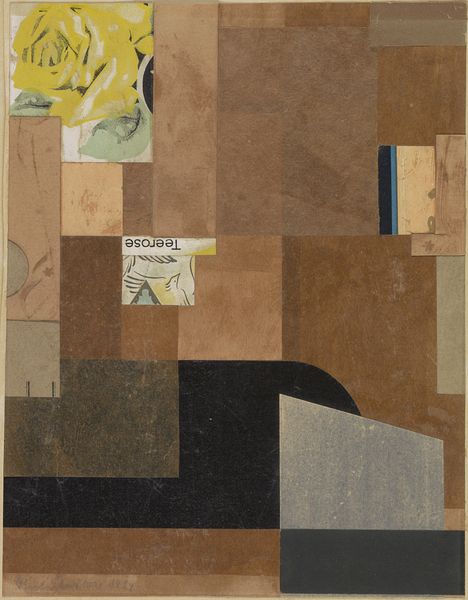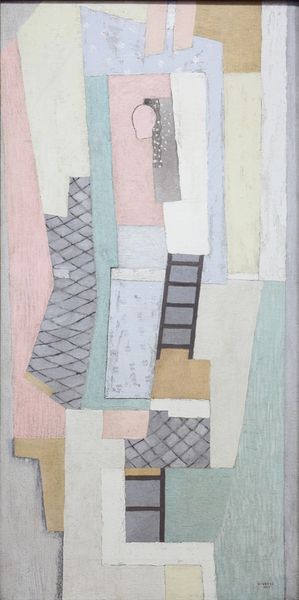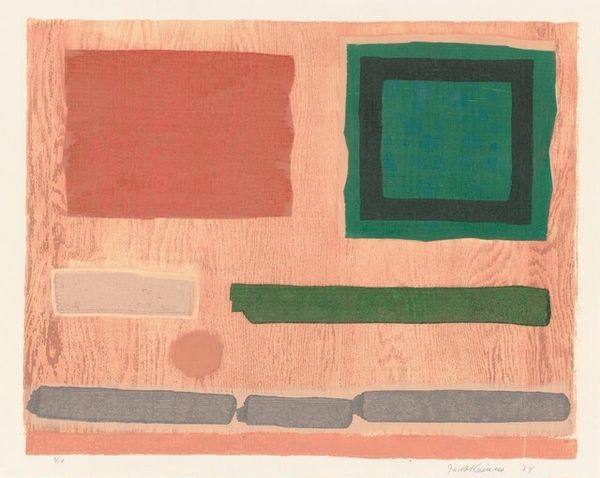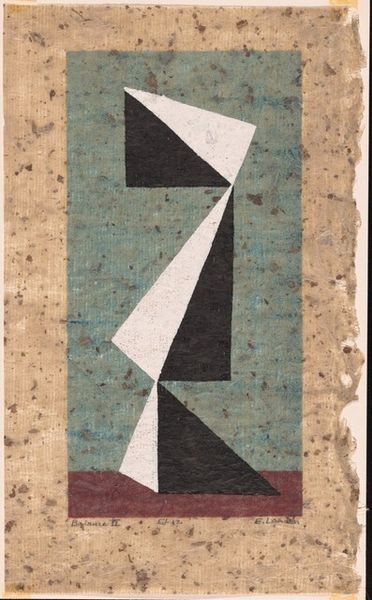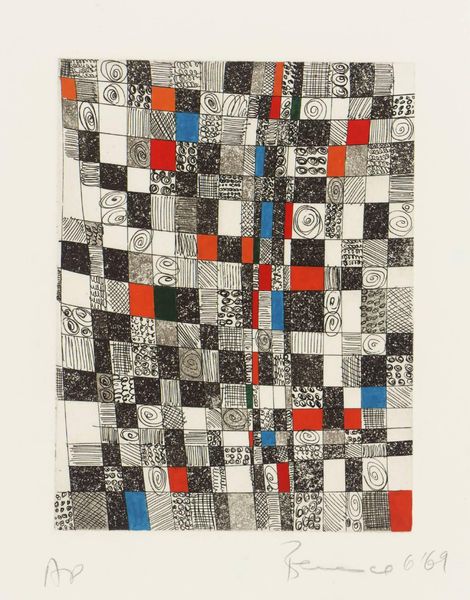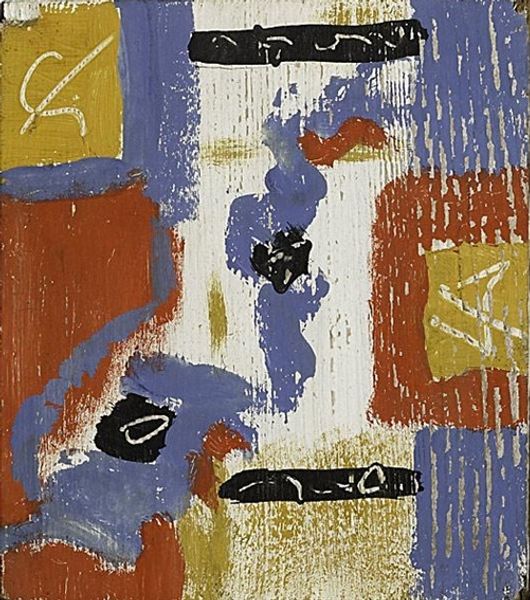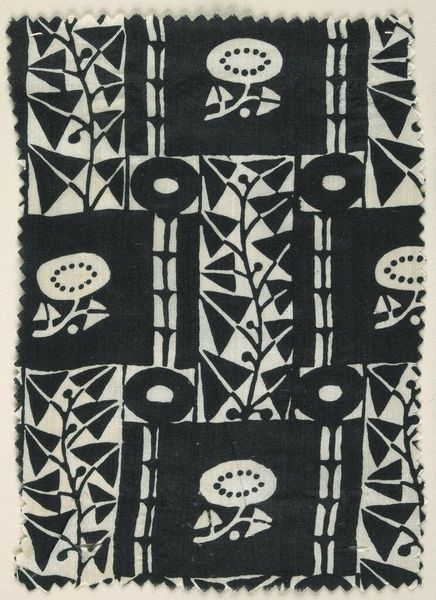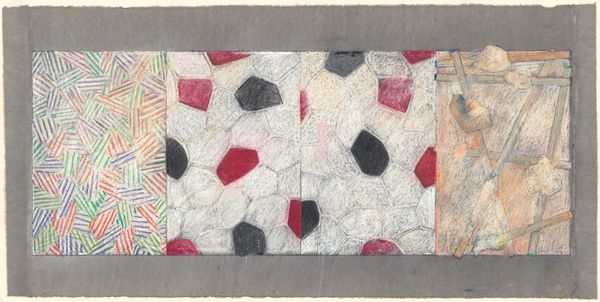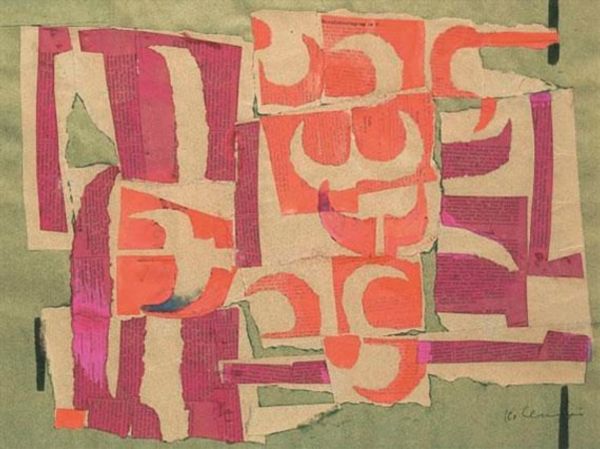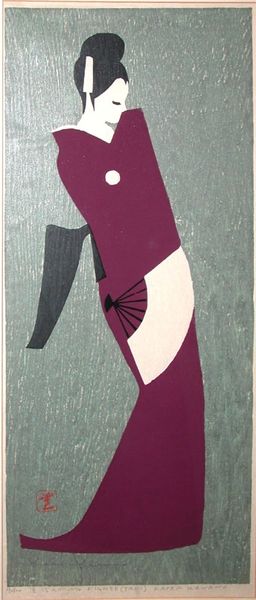
weaving, textile
#
art-deco
#
weaving
#
textile
#
geometric
#
abstraction
Copyright: Francis Bacon,Fair Use
Curator: What do you make of this "Rug" from 1929? Its composition strikes me as a somber monument. Editor: Monumental is right. The palette of browns, creams, and blacks creates a heavy, serious atmosphere, and those looming geometric shapes hint at a disruption of established systems, reflecting tensions from the inter-war period. Curator: Indeed. Given what we know about its creator, Francis Bacon, this rug becomes fascinating as a little-known early foray into design, years before his paintings shocked the art world. Considering that Art Deco style dominated the era, it could also be viewed as Bacon’s attempt to intersect with a particularly fertile moment of artistic production. Editor: Absolutely. There’s also a deep engagement with primordial symbols. Look at how the intersecting circles seem to be halved, becoming broken mandalas, and those spotted patterns remind us of leopard spots, which, as the great symbol hunters of history, the Romani people would probably say symbolizes adaptability and resourcefulness. Do you feel there are references to nature's powerful energies here, subdued yet ready to erupt? Curator: It's tempting to overstate, but seeing Bacon’s hand in even these quiet textiles adds layers to our understanding of his later, visceral work. We could also speculate that he consciously wanted to upend conventions, especially given class status signifiers in the home and bourgeois artistic tastes, later rendered through expressionistic abstraction. Editor: Precisely. And isn’t the choice of the textile medium in itself a fascinating dialogue with craft traditions usually attributed to women or “othered” communities, while also disrupting fine art's male-dominated arena? These symbols of both the natural world and our manmade environments allow us to decode our histories as the repeating patterns remind us of what has gone before and inform what’s to come. Curator: You know, viewing it as part of Bacon’s larger career lets us engage with not just one individual's trajectory, but an entire artistic and social ecology. Editor: I agree completely. Examining "Rug," and more artworks, gives insight into enduring ideas, feelings, and ways of life reflected within the symbols, the woven elements, the chosen material and tones we engage with still today.
Comments
No comments
Be the first to comment and join the conversation on the ultimate creative platform.
